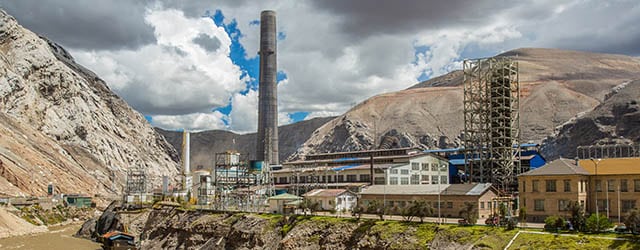Compared with several other markets in the region, Peru’s economy is rock-solid.

Back To Table Of Contents
As the International Monetary Fund and World Bank convene this month in Lima for their annual meetings, the host nation will be squarely in the spotlight. At first glance, the timing wouldn’t seem to be the best. Like other nations in Latin America, Peru has been hit by falling commodity prices and the slowdown in emerging markets economies. Some of those countries—notably, Brazil and Venezuela—are facing serious financial hardship.
Peru’s economy, however, has remained fairly stable. The strong fiscal position built during a decade of rapid growth has allowed the government and central bank to adopt an accommodative stance. Fiscal and monetary policies are keeping the economy and national currency, the sol, afloat. “If we compare Peru to other countries in the region, things look brighter,” says Francisco Grippa, principal economist for BBVA Research in Peru. “Even more so if we consider only Latin America’s largest economies.”
Gross domestic product in Venezuela, for instance, could shrink by as much as 6.4% this year, according to Consensus Economics. Brazil is likely headed for a 3% contraction in GDP. In contrast, Peru is expected to see a 3% hike in its domestic product. That number could pass 4% in 2016, according to Consensus Economics.
Granted, this is down from the country’s go-go days of 2010, when GDP growth touched 8.5%. But 4% GDP growth doesn’t look half bad under the circumstances. Construction in China—a big part of Peru’s export-led boom over the past decade—has slowed dramatically. The slide in commodities prices has made matters worse.
GFmag.com Data Summary: Peru |
|||
|---|---|---|---|
|
Central Bank: Central Reserve Bank of Peru |
|||
|
International Reserves |
Central Reserve Bank of Peru |
||
|
Gross Domestic Product (GDP) |
$218 billion |
||
|
Real GDP Growth |
2012 |
2013 |
2014 |
|
GDP Per Capita—Current Prices |
$6,458.287* |
||
|
GDP—Composition By Sector* |
agriculture: |
industry: |
services: |
|
Inflation |
2012 |
2013 |
2014 |
|
Public Debt (general government |
2012 |
2013 |
2014* |
|
Government Bond Ratings |
Standard & Poor’s |
Moody’s |
Moody’s Outlook |
|
FDI Inflows |
2011 |
2012 |
2013 |
* Estimates
Source: GFMag.com Country Economic Reports
INTERVENING MOMENTS
The presidential elections, scheduled for April 2016, add more uncertainty to the mix. But the consensus is that the winner will likely continue the policies of outgoing president Ollanta Humala. “The three main candidates are all middle of the road,” says Alfredo Thorne, principal director of Lima-based advisory firm Thorne & Associates and economic adviser to presidential hopeful Pedro-Pablo Kuczynski.
In fact, Peru’s fiscal and monetary policies—and white-hot economic growth in the past decade—have put the country on solid financial footing. It has amassed substantial foreign exchange reserves. Although Peru has gone from budget surpluses to deficits, “fiscal accounts are still well managed and have enabled a stimulus to help offset weakness in other sectors.”
The inflation rate in Peru is low—around 3%—as is country risk. “Compared to the rest of the region,” says Roberto Duncan, assitant professor of economics at Ohio University, “Peru has been showing remarkable macro indicators for the last ten years or so.”



